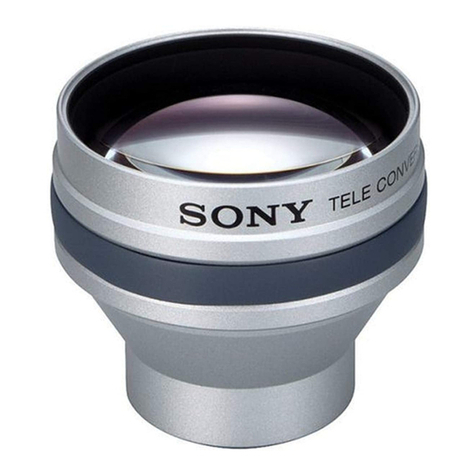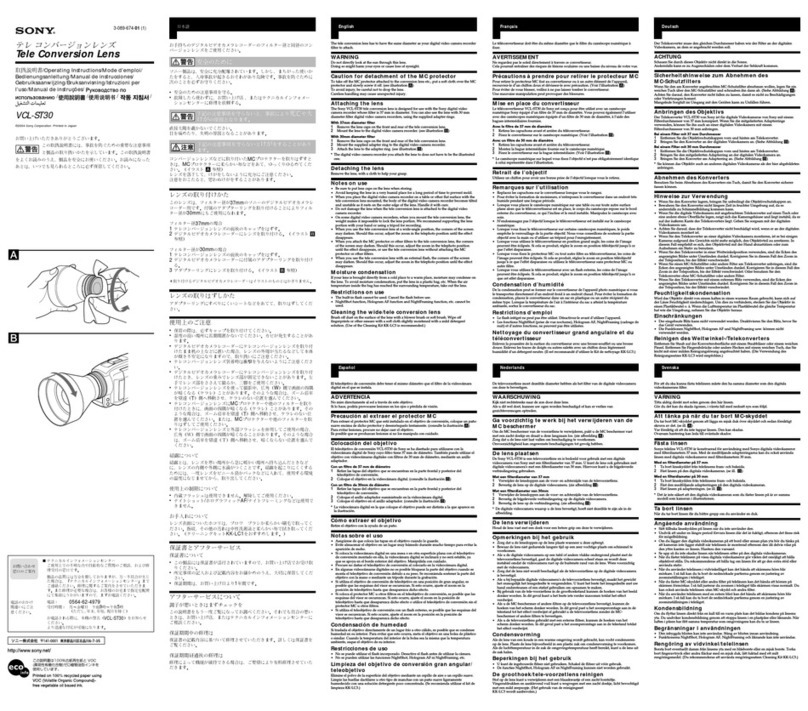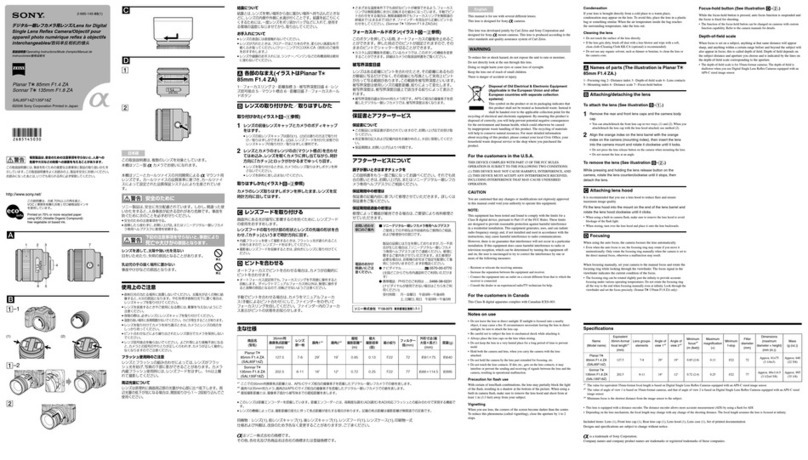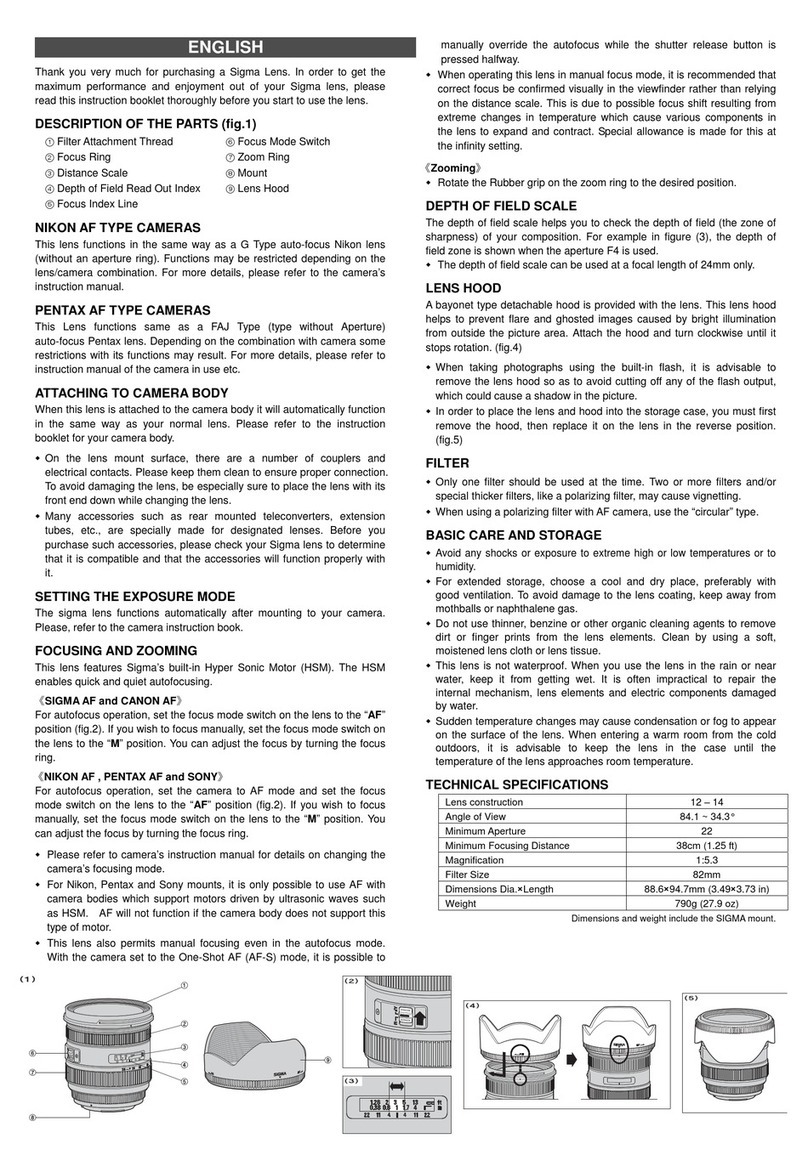
EN 11
Notes on Shooting
• Please use the latest firmware for the camera.
Operations will vary depending on the
camera. For more information, please visit our
home page. Contact the other manufacturer
to mount the lens on another manufacturer’s
digital camera.
• Edges of pictures may be cut off if more than
one filter is used or if a thick filter is used.
• When using a flash, flash light may be blocked
by the lens body, lens hood, etc.
• Usage conditions may lower the number of
images that can be captured.
• Do not touch electric contacts on cameras.
• If autofocus (AF) is unavailable, check the
sliding position of the focus ring.
• The focus distance may change when the
focusing method is switched from MF to AF/
MF and then back to MF. Readjust the focus
distance.
• The distance and magnification indicators are
intended as a guide only.
Main Specifications
Mount : Micro Four Thirds mount
Focal distance : 90 mm
(equivalent to 180 mm on a
35 mm camera)
Max. aperture : F3.5
Image angle : 14°
Lens configuration : 13 groups, 18 lenses
Iris control : F3.5 to F22
Shooting range : 0.224 m (8.8 in.) to )
(infinite)
Focus adjustment : AF/MF switching
Dimensions : ⌀69.8 mm/2.7 in.
(maximum diameter) ×
136.0 mm/5.4 in. (length)
Weight : 453 g (16.0 oz.)
(excluding hood and cap)
Filter size : ⌀62 mm
Lens hood : Bayonet
This lens can be used with an M.ZUIKO
teleconverter. For more information on
compatible teleconverters and notes on
combining them with the lens, please visit our
home page.





























